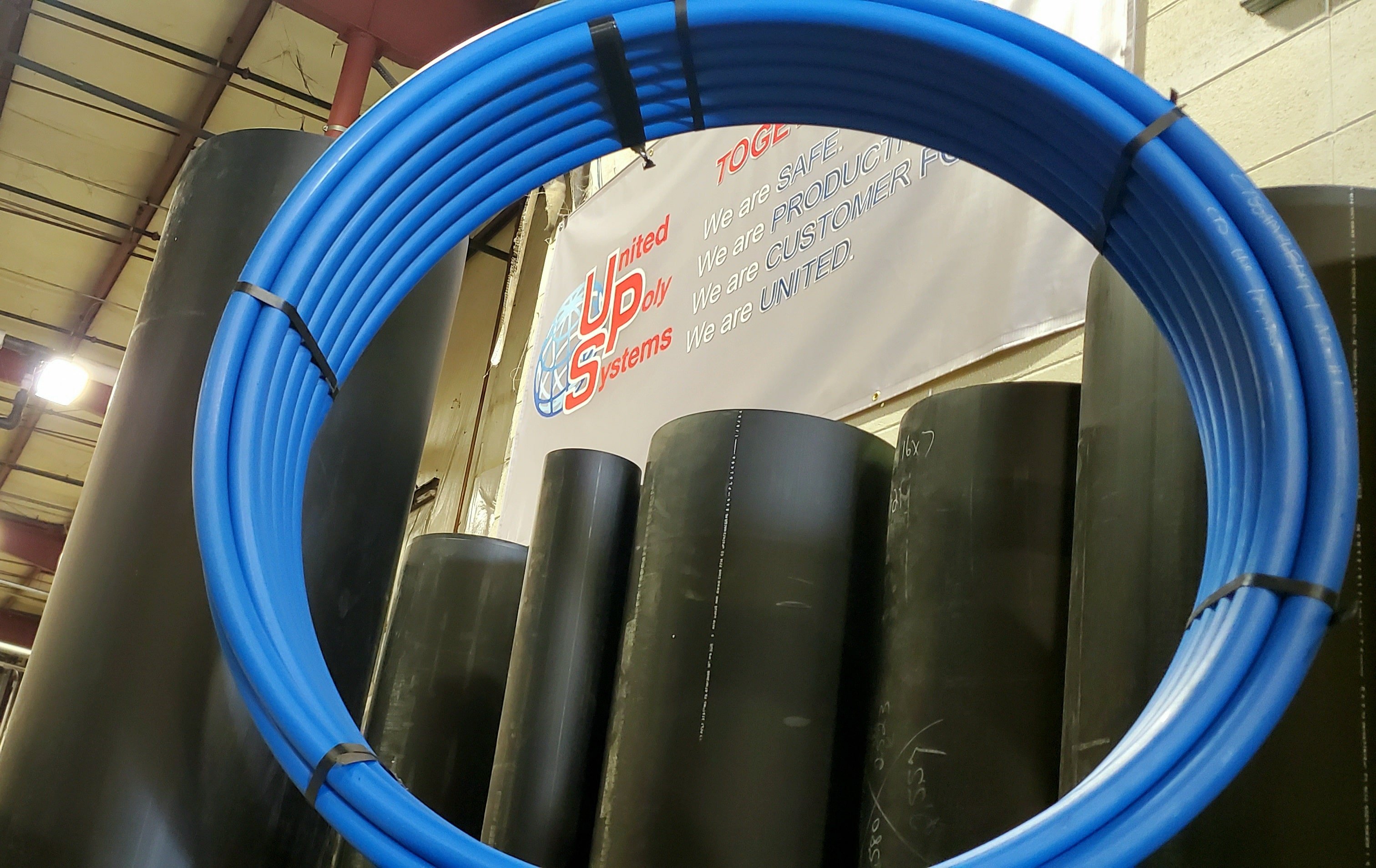As we’ve discussed before in our blog, U.S. infrastructure needs to be updated, particularly the network of pipes that bring drinking water to American homes. Lead, cast iron and ductile iron pipes can leach harmful chemicals into water and are prone to corrosion and leaks. A 2018 report from Dr. Steven Folkman at Utah State University discussed the troubles of aging infrastructure. The report highlighted the costly problem of water main breaks caused by corrosive soils. Cast iron and ductile iron pipes corrode easily in these environments, causing breaks and leaks.
Fortunately, there is a material that does not corrode or leak: polyethylene. In this blog post, we’ll discuss ductile iron pipe properties, its advantages and disadvantages, and the benefits of HDPE pipe for water infrastructure.
What is ductile iron pipe?
Ductile iron pipe was introduced to the market in the 1950s as a high-strength replacement for cast iron pipe. Cast iron pipe is brittle and prone to breaking under high pressure or impacts. As the name suggests, ductile iron pipe is flexible and will bend instead of breaking. Both forms of iron contain graphite. The graphite in ductile iron is in the form of small spheres (called nodules or spheroidal graphite), which causes its flexible nature. Recycled materials, like scrap steel and iron, are used to manufacture ductile iron pipe.
Ductile iron pipe is commonly used for potable water distribution and sewer/wastewater transmission. Internal linings and external coatings are used to prevent the iron pipes from corroding or rusting. Cement mortar or polyurethane are used for internal linings, and loose polyethylene sleeving (LPS) is used as an external lining to protect the pipe from corrosive soil. It is shipped in 20-foot lengths and installed via trenching. Modern, properly coated/installed ductile iron pipe is expected to have a service life of more than 100 years.
Benefits of HDPE compared to ductile iron pipe
While ductile iron pipe is flexible, durable and has a long service life, there are several advantages to using plastic pipe instead. The installation process for HDPE pipe is straightforward, as plastic pipe is flexible and can be quickly fused. The connections and joints of HDPE pipe have inherent structural integrity, unlike ductile iron pipe.
Cathodic corrosion is a serious problem with ductile iron pipe. Water, oxygen, metal, corrosive soil and other materials can cause iron pipe to corrode or rust. Corrosion will eventually cause iron pipes to decay, crack and develop holes, leading to leaks. Ductile iron pipe is coated with polyethylene material–the same material HDPE is made of–to prevent cathodic corrosion. HDPE pipe will not corrode and does not require the extra linings and coatings that are necessary to protect iron pipe.
 Internal corrosion in iron pipe. Image from Corrosionpedia.
Internal corrosion in iron pipe. Image from Corrosionpedia.
Plastic pipe, like HDPE, also has a 100+ year service life and requires no maintenance over its lifespan. HDPE is the economical choice for water infrastructure. Once it is installed, there is no maintenance required.
HDPE pipe in the water infrastructure market
HDPE pipe is a safe and long-lasting choice for projects in the water infrastructure market. It is durable, corrosion-resistant and will not leach harmful chemicals into drinking water. Once HDPE pipe is installed, there is no maintenance required, removing the costly burden from municipalities and utilities districts. Like ductile iron, HDPE can be recycled at the end of its long service life.
United Poly Systems manufactures a product suite of HDPE pipe specifically for the water infrastructure market. These products include Base-Line™ for mining operations, Crystal-Line™ for potable and sewer water infrastructure, Hard-Line™ for high-pressure, high-corrosive and heavy wall applications and Sewer-Line™ for sewage applications.

